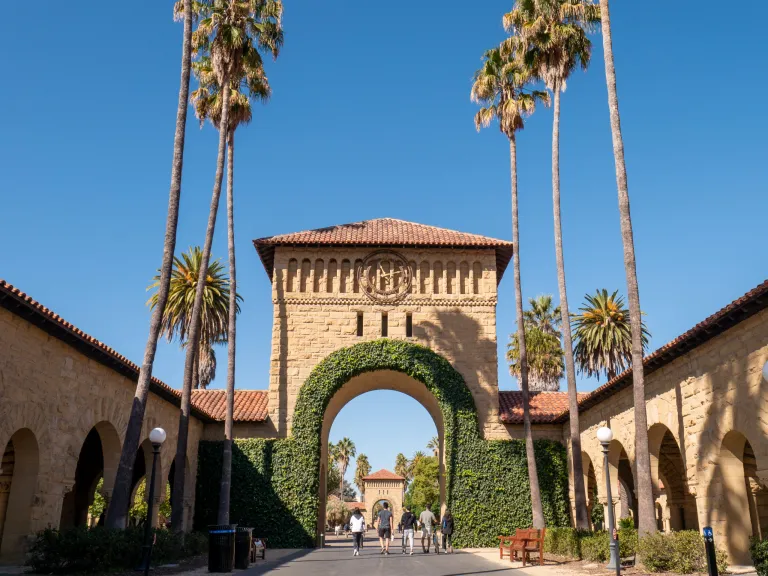Alberto Mora is a current graduate student in the Latin American Studies program.
As someone who was born and raised in the Bay Area, coming to Stanford University as a student can almost feel like an entirely different world. The campus itself perpetuates the illusion that the Bay Area is a socially progressive utopia. The harsh reality, however, is that the Bay Area is massively unequal and highly stratified. For example, I was born and raised in Redwood City, a mid-sized suburban city that is about 10 minutes away from campus; however, despite my familiarity with and proximity to Palo Alto, I felt like a stranger when I first came here. Given Stanford’s worldwide reputation as a premier university, as well as its deep connections to Silicon Valley, it is easy to understand why it is such an attractive choice for many students. Nevertheless, in six months at Stanford, only five of the countless undergraduate and graduate students I met were originally from the Bay Area. According to Stanford’s undergraduate student profile for Fall 2021, of the 7,645 matriculated undergraduate students, only 36% were from California, while international and out-of-state students accounted for 64% of the student population. Furthermore, the statistics do not reveal what fraction of the 36% of students from California is actually from the Bay Area. While I am not critiquing the type of student that comes to Stanford, it is important to let Stanford students know that life at the university is not representative of what many people experience in the Bay.
Perhaps many students know how the San Francisco Bay Area is infamous for its severe housing crisis, yet I doubt that many actually understand what that entails. Being the son of Mexican immigrants, I grew up in a small unincorporated section of Redwood City known as North Fair Oaks, or as it’s known colloquially, “Little Mexico.” Due to its large Mexican/Latinx population, North Fair Oaks has been a historically low-income community that for the most part has been segregated from the rest of Redwood City. It was here that my parents were able to afford a home; that is, until the 2008-2009 subprime mortgage crisis and subsequent recession. Since then, my family and I have moved from apartment to apartment trying to support ourselves during one of the most financially challenging times in U.S. history. By the time I graduated high school back in 2014, and with the economy beginning to recuperate, we were unable to compete with the rising housing costs due to the influx of tech workers in the Silicon Valley; we had no other choice but to move to the East Bay. Even to this day, the ripple effect of the housing crisis and gentrification is pushing my family out, making it more difficult to continue living in the Bay Area. Adding insult to injury, the last information I heard about my childhood home that was foreclosed on us back in 2010 was that it sold for $1.3 million dollars a few years later.
Contrasting this to the present day, many students who find out I’m from here often ask about the best hang-out spots in San Francisco or San Jose, or the best places to eat, or where the best beaches or hiking trails are located. As someone who has had to climb an overwhelmingly large mountain to get here, a place that has been figuratively in my backyard yet drastically out of my reach, I can’t help but feel a twinge of pain and frustration. To feel like a stranger or tourist in one’s own home and neighborhood gives the impression that my life experiences and overall existence here are invalidated or unwanted amid the changing demographics of the Bay Area. This is not to say that students here are overtly oblivious to the greater socio-economic disparity around the Bay Area; rather, Stanford seems to almost enclose students in an environment where most basic necessities and other services like healthcare, childcare, sports and other amenities are taken care of one way or another. Many students spend their time here without ever exploring the “real” Bay Area.
My goal in raising awareness of this issue is not to blame Stanford or guilt Stanford students, but I believe that everyone here on campus should take the time to investigate this divide between Stanford and the rest of the Bay. To the University’s credit, Stanford seems to be taking steps to bridge this gap by offering community engagement programs like Cardinal Courses that “engage in projects and partnerships in the community that address social or environmental challenges,” or by providing internship opportunities to local middle school and high school students. Nevertheless, I would suggest that Stanford students who truly want to get an “authentic” Bay Area experience should physically explore areas that aren’t often advertised around campus. A simple BART ride through Oakland, traveling through East Palo Alto, or walking through the Alum Rock area of San Jose can be an eye-opening experience. It’ll give you a more real sense of what the Bay Area is like rather than exploring the Googleplex, ApplePark or Facebook’s headquarters.
So when students on campus are often basking in the warm California weather, or lounging about at the Coupa Café, lamenting about the exorbitant prices at the local grocery stores on campus or around Palo Alto, or hiking through the Santa Cruz mountains, please note that there are tangible, social inequities that prevent people in the Bay Area from having the same access and privilege afforded to students here at Stanford. As more and more low-income and a disproportionately large number of primarily minority families in and around the Bay are being pushed out of their homes, remember that Stanford does not represent what true life is like in the Bay Area.
